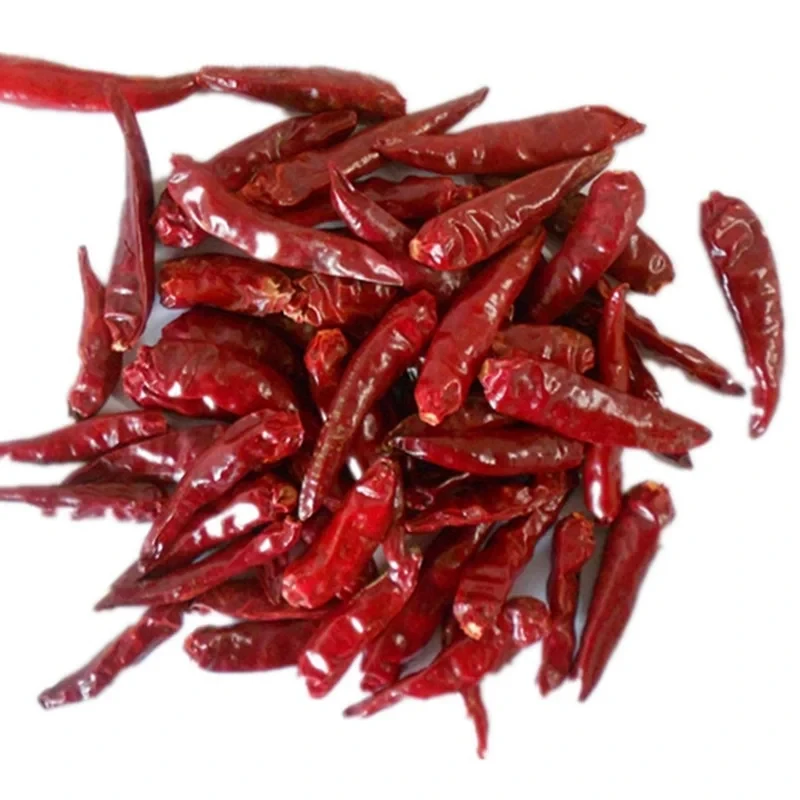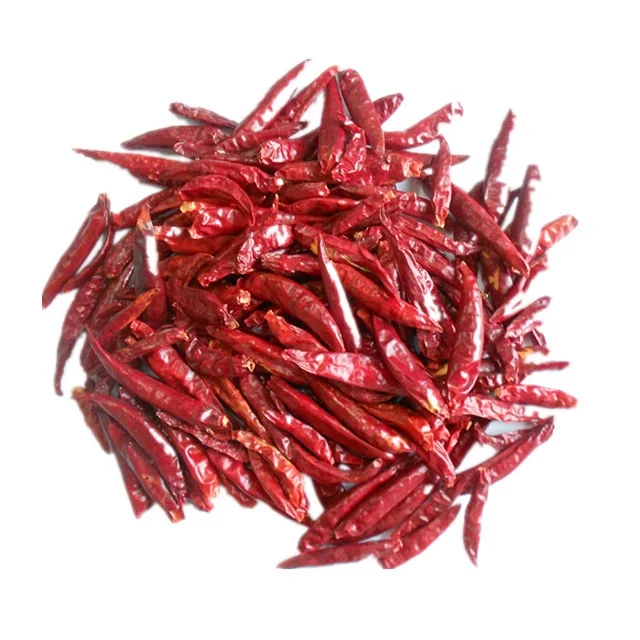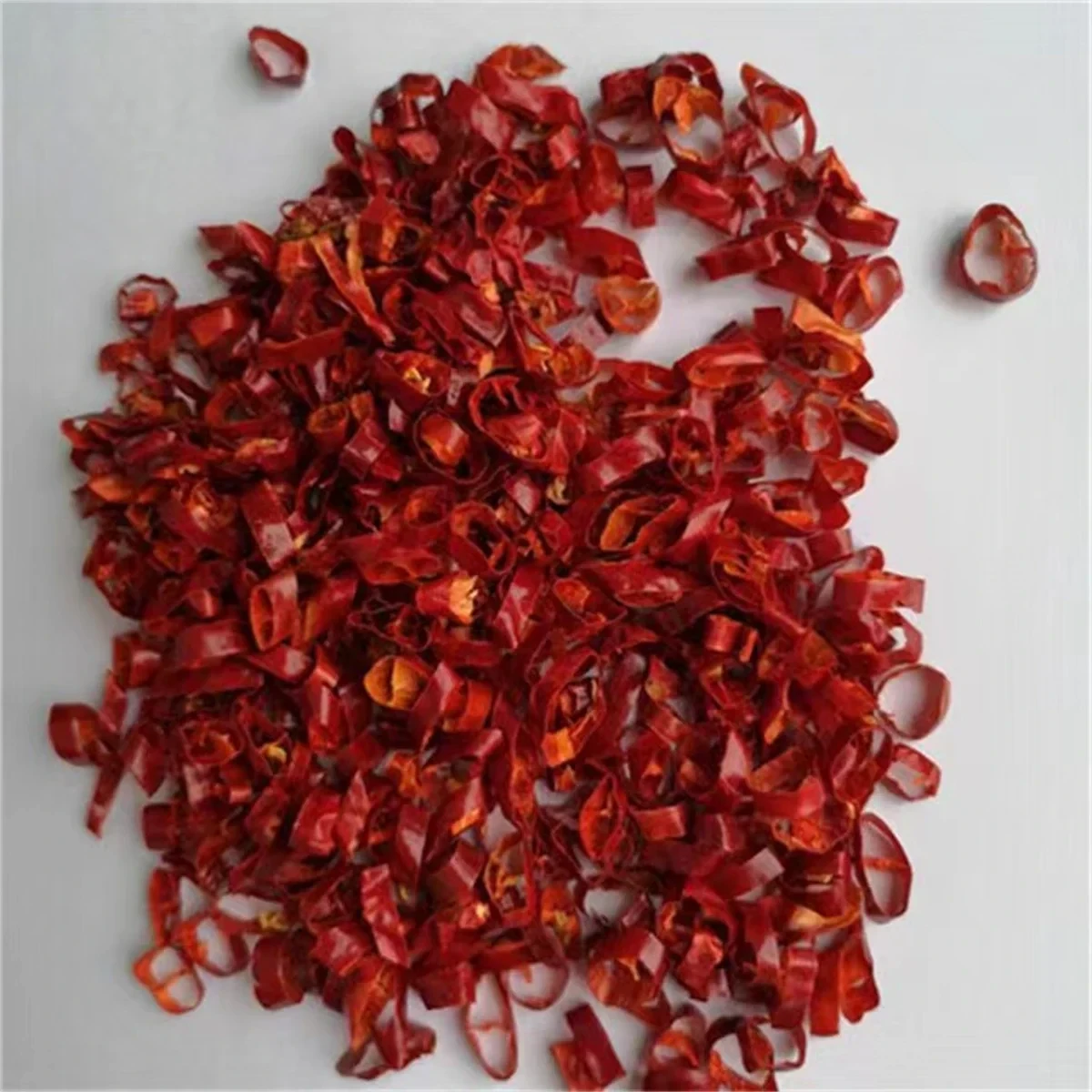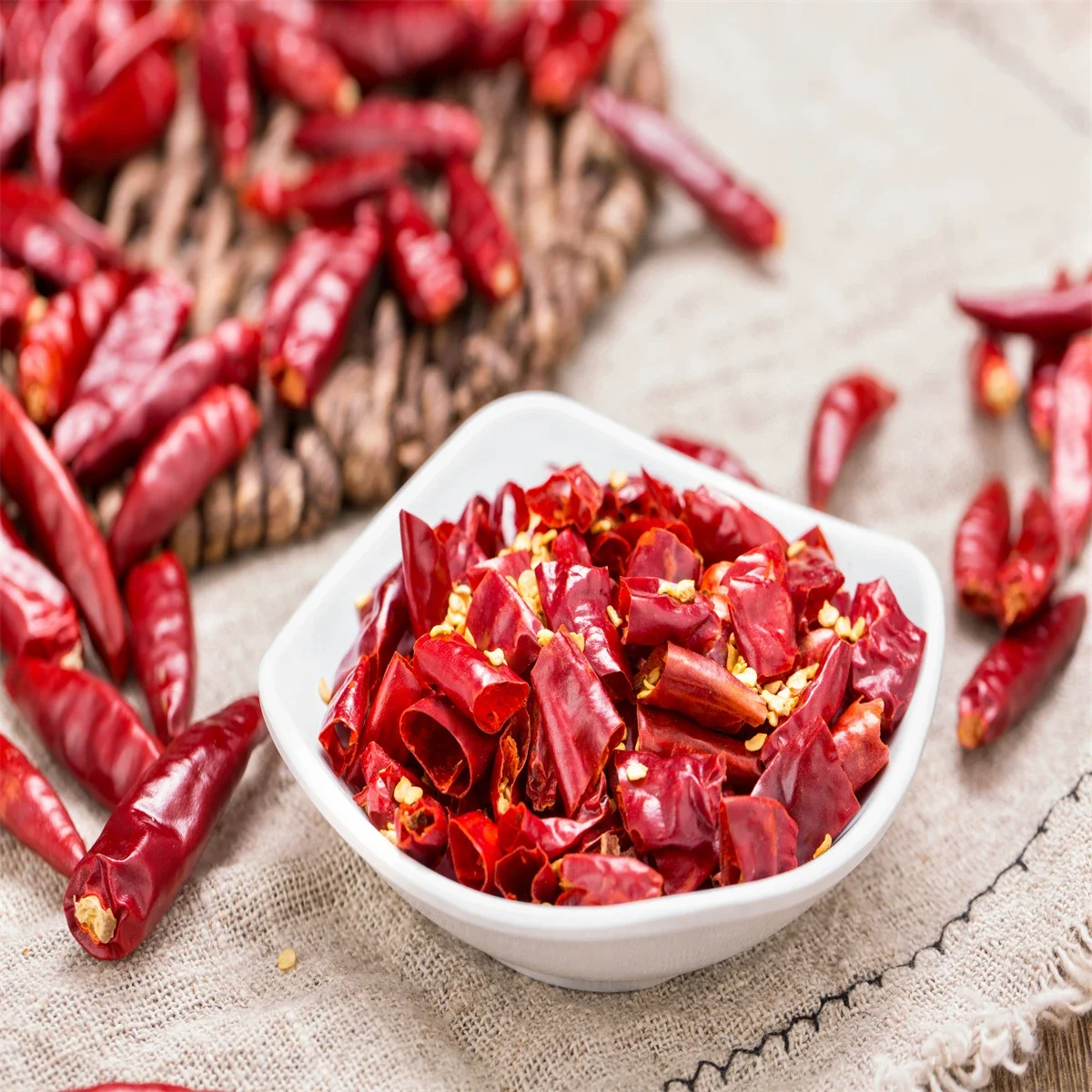Chili - The Spice of Life
Chili, a beloved spice used worldwide, is a versatile ingredient that adds depth, flavor, and heat to any dish. Known for its rich, spicy kick, chili peppers come in various forms, including fresh, dried, powdered, and as chili sauce or oil. Whether you're an adventurous cook or someone who enjoys adding a touch of heat to your meals, chili products offer the perfect solution.
Fresh Chili Peppers are vibrant, juicy, and packed with heat. From mild to extremely spicy varieties, fresh chilies can be sliced, diced, or used whole to infuse dishes with their pungent aroma. Great for stir-fries, salsas, and curries, fresh chilies add a fresh and bold flavor to your meals.
Dried Chili Peppers are perfect for slow-cooking and flavor extraction. When dried, chilies intensify their heat and smokiness. You can use them whole, ground into chili powder, or rehydrate them to create sauces and soups with a complex depth of flavor.
Chili Powder is a staple in kitchens around the world. A blend of dried chili peppers and other spices like cumin and garlic, chili powder adds a punch of heat and a savory aroma to dishes. Perfect for seasoning meats, soups, stews, and even grilled vegetables, chili powder offers convenience without compromising on flavor.
Chili Sauces and Oils are excellent for those who prefer a ready-to-use option. These products combine chili with ingredients like garlic, vinegar, or sesame oil to create flavorful sauces and oils that elevate your dishes instantly. Whether you like it sweet, tangy, or fiery, chili sauces and oils are perfect for dipping, marinating, or adding to your favorite foods.
Enhance your culinary creations with chili – a bold, flavorful ingredient that brings spice and excitement to every meal!
-

Bag-ong henerasyon nga uga nga sili
30,000-40,000SHUKining bag-ong henerasyon nga pinauga nga sili maayo nga gipili ug gipauga sa adlaw, nagpreserbar sa ilang natural nga mga kalidad ug tradisyonal nga mga pamaagi sa produksyon, nga miresulta sa usa ka premium nga culinary ingredient. Kini mao ang 100% natural nga walay bisan unsa nga additives, nga nagpakita sa usa ka buhi nga pula nga kolor, talagsaon nga palami, makanunayon spiciness, ug talagsaon nga kalidad. Nagsilbi kini nga usa ka himsog nga alternatibo nga panimpla, nga nagtugot sa mga konsumedor sa pag-adjust sa lebel sa spiciness sa ilang mga pinggan sumala sa personal nga gusto. Ang lahi nga mga kalidad sa among bag-ong henerasyon nga pinauga nga sili naghimo niini nga usa ka versatile ug madanihon nga kapilian alang sa mga mahiligon sa culinary.
-

Pinauga nga Tianying nga sili
8000-10,000SHUKining uga nga Tianying chili maampingon nga gipili ug gipauga sa adlaw, nagpreserbar sa ilang natural nga mga kalidad ug tradisyonal nga mga pamaagi sa produksyon, nga miresulta sa usa ka premium nga culinary ingredient. Kini mao ang 100% natural nga walay bisan unsa nga additives, nga nagpakita sa usa ka buhi nga pula nga kolor, talagsaon nga palami, makanunayon spiciness, ug talagsaon nga kalidad. Nagsilbi kini nga usa ka himsog nga alternatibo nga panimpla, nga nagtugot sa mga konsumedor sa pag-adjust sa lebel sa spiciness sa ilang mga pinggan sumala sa personal nga gusto. Ang talagsaon nga mga kalidad sa among pinauga nga Tianying chili naghimo niini nga usa ka versatile ug madanihon nga pagpili alang sa mga mahiligon sa culinary.
-

Tianying singsing
8000-10,000SHUKini nga chili cut kay 100% natural nga walay bisan unsa nga additives, nga nagpakita sa usa ka buhi nga pula nga kolor, talagsaon nga lami, makanunayon nga spiciness, ug talagsaon nga kalidad. Nagsilbi kini nga usa ka himsog nga alternatibo nga panimpla, nga nagtugot sa mga konsumedor sa pag-adjust sa lebel sa spiciness sa ilang mga pinggan sumala sa personal nga gusto. Ang lahi nga mga kalidad sa among chili cut naghimo niini nga usa ka versatile ug madanihon nga kapilian alang sa mga mahiligon sa culinary.
Ang among chili cut nagtanyag ug customisable nga mga opsyon alang sa lain-laing gilapdon ug proporsyon sa mga liso. kami komitado sa pag-accommodate sa lain-laing mga panginahanglan sa customization.
-

Giputol ni Tianying
8000-10,000SHUKini nga chili cut kay 100% natural nga walay bisan unsa nga additives, nga nagpakita sa usa ka buhi nga pula nga kolor, talagsaon nga lami, makanunayon nga spiciness, ug talagsaon nga kalidad. Nagsilbi kini nga usa ka himsog nga alternatibo nga panimpla, nga nagtugot sa mga konsumedor sa pag-adjust sa lebel sa spiciness sa ilang mga pinggan sumala sa personal nga gusto. Ang lahi nga mga kalidad sa among chili cut naghimo niini nga usa ka versatile ug madanihon nga kapilian alang sa mga mahiligon sa culinary.
Ang among chili cut nagtanyag ug customisable nga mga opsyon alang sa lain-laing gitas-on ug proporsyon sa mga liso. kami komitado sa pag-accommodate sa lain-laing mga panginahanglan sa customization.
What Is The Trick To A Good Chili?
Chili, a beloved spice used worldwide, is a versatile ingredient that adds depth, flavor, and heat to any dish. Known for its rich, spicy kick, chili peppers come in various forms, including fresh, dried, powdered, and as chili sauce or oil. Whether you're an adventurous cook or someone who enjoys adding a touch of heat to your meals, chili products offer the perfect solution.
Fresh Chili Peppers are vibrant, juicy, and packed with heat. From mild to extremely spicy varieties, fresh chilies can be sliced, diced, or used whole to infuse dishes with their pungent aroma. Great for stir-fries, salsas, and curries, fresh chilies add a fresh and bold flavor to your meals.
Dried Chili Peppers are perfect for slow-cooking and flavor extraction. When dried, chilies intensify their heat and smokiness. You can use them whole, ground into chili powder, or rehydrate them to create sauces and soups with a complex depth of flavor.
Chili Powder is a staple in kitchens around the world. A blend of dried chili peppers and other spices like cumin and garlic, chili powder adds a punch of heat and a savory aroma to dishes. Perfect for seasoning meats, soups, stews, and even grilled vegetables, chili powder offers convenience without compromising on flavor.
Chili Sauces and Oils are excellent for those who prefer a ready-to-use option. These products combine chili with ingredients like garlic, vinegar, or sesame oil to create flavorful sauces and oils that elevate your dishes instantly. Whether you like it sweet, tangy, or fiery, chili sauces and oils are perfect for dipping, marinating, or adding to your favorite foods.
Enhance your culinary creations with chili a bold, flavorful ingredient that brings spice and excitement to every meal!
Why Are Peppers Called Chili?
The term "chili" is often used to refer to various types of hot peppers, but its origin and usage are a bit more complex. Here’s why peppers are called "chili":
1.Etymology from Nahuatl (Aztec language):
The word "chili" comes from the Nahuatl language, which was spoken by the Aztecs and other indigenous peoples in Mesoamerica. In Nahuatl, the word for pepper is "ch? lli". The Aztecs and other native groups in Central and South America cultivated and used chili peppers long before Europeans arrived, and they were integral to their cuisine.
When Spanish explorers encountered these peppers in the Americas in the 15th and 16th centuries, they adopted the Nahuatl word "ch? lli" to describe them. The term eventually made its way into other languages, including English, where it became commonly used.
2. Naming Confusion and Global Spread:
The word "chili" is used differently around the world. In many places, "chili" refers to the fruit of the Capsicum plant, which can be used fresh, dried, or powdered to add heat to food. However, when used in the context of chili con carne (the famous spicy stew), the name "chili" specifically refers to the dish made with ground meat, chilies, beans, tomatoes, and spices.
In the U.S. and many English-speaking countries, the term "chili" has become synonymous with hot peppers, especially Capsicum annuum, which includes common varieties like jalapenos, serranos, and cayennes. However, in other parts of the world, like India and some parts of Asia, the term "chili" often refers to the spicier varieties of Capsicum that are commonly used in their cuisines.
3. "Chili" vs. "Chili Pepper":
In the 17th century, when Christopher Columbus brought the peppers back to Europe, they were initially thought to be a type of pepper (which they resemble in taste and appearance). The name “pepper” had already been used to describe the spicy fruit of the Piper nigrum plant (black pepper), and this led to the widespread use of the term "pepper" for the Capsicum family, despite them being botanically unrelated. Over time, the term "chili pepper" was adopted in many languages to differentiate the spicy peppers from black pepper.
In this sense, "chili" became shorthand for chili pepper, the pepper that imparts heat, especially from the Capsicum family, which includes many varieties of peppers that vary in heat intensity.
4. Cultural Influence and Usage:
The spread of chili peppers around the world, particularly after the Columbian Exchange (which was the exchange of plants, animals, and cultures between the Americas and the Old World), played a significant role in shaping global cuisine. As chili peppers became more commonly used in a wide range of dishes, the name “chili” was often applied to dishes and recipes that incorporated these peppers, such as chili con carne, chili oil, and chili sauce.
In summary, "chili" is derived from the Nahuatl word for pepper, "ch? lli", and has evolved in usage due to its widespread adoption in cuisines around the world. It’s used to refer to both the pepper itself and the dishes made with it, particularly those that are spicy and contain peppers.








